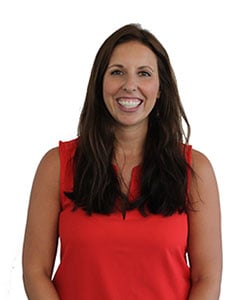
How Will You Measure The Success Of Personalized Learning
Personalized Learning | School Districts

Many educators know Clayton Christensen for his work on Disrupting Class. Fewer may know his philosophical work, How Will You Measure Your Life? I first encountered his ideas in an essay published in The Harvard Business Review in 2010. This essay was the result of a conversation Christensen had with his business school students at the conclusion of every semester. “On that day, we used the thinking we’ve shared in the course for a powerful purpose-- to ensure they are successful not just in their careers, but in their lives as well.” Christensen asked his students not just how they will measure their professional or financial success, but how they would 1) ensure happiness in their career; 2) make relationships with family an enduring source of happiness; and 3) stay out of jail.
These are powerful questions and ones you might not expect a business school professor to focus on. I was revisiting Christensen’s essay last weekend as I contemplated a question that I come back to almost every month. How we will measure the success of personalized learning? Arguably, the primary goal of personalized learning -- and most school implementations -- is to improve student academic outcomes. Certainly this is important and there is some early data (from Education Elements’ district partners and a RAND Corporation study) that suggest blended and personalized models can lead to increased student academic growth. A focus on academic growth indicators helps school staff, families, and students know that personalized learning models are affecting learning in a positive way. Academic success could be an important measure of a successful implementation, in the same way having financial security could be one important measure of a successful life. However, as I think about the effect I hope personalized learning will have in the long term, I find it necessary to take a broader lens of “success,” one inspired by Christensen.
Before I am at the end of the year, and can review summative data results based on student academic assessments, I “measure” the success of personalized learning by small changes- if I see some things happening with greater frequency, my gut tells me that personalized learning is improving our schools:
- Are teachers given a voice in making decisions about school instructional models and curriculum tools?
- Are teachers empowered to be designers of teaching and learning?
- Do students have voice and choice in what, how, when, or where they learn?
- Do students feel like school is something that builds on their strengths?
- Is school full of joy?
- Is learning relevant and rigorous?
Often the first and most important step in defining success is simply defining what we mean when we say “personalized learning.” As LEAP Chief of Learning Innovation, Chris Liang-Vergara stated in his insightful piece on PL frameworks, “It’s important to set standards for what you and your organization mean when you say, ‘we are doing personalized learning,’ because it will keep you on course and allow you to define a vision of success.”
We coach schools and district through this visioning process and in defining success, but ultimately it’s up to each school and district to determine their own definition of personalized learning and measures of success. They determine the elements they’ll look for to signal if they are moving in the right direction. It’s tempting to promote my own idea of success or offer examples of how other schools and districts have measured it. Here too I take a lesson from Christensen, who insisted that his students and world leaders alike construct their own solutions. As Christensen states, “When people ask what I think they should do, I rarely answer their question directly.” Instead I describe a process or model for thinking “And then, more often than not, they’ll say, ‘OK, I get it.’ And they’ll answer their own question more insightfully than I could have.” As a consultant, my approach is the similar: share a useful framework and serve as a guide in creating a solution that matches each school’s context, values, and needs. My model for measuring success is simple:
Model for Measuring Success
| 1. Determine what you want to see in your school or district |
| 2. Determine how to measure if there is more or less of #1 happening |
| 3. Make changes based on the trends you observe in #2 |
It seems simple, but this cycle of reflection, iteration, and implementation is powerful.
However you and your team define success, the goal is for you to be able to say at the end of a week, month, semester, and year, “I know that personalized learning is benefitting for my staff and students because….” (see #1, #2, and #3 above). My hope is that these measures are factors that truly change the lives of teachers, families, and students.
Want to learn about the measure of success of personalized learning?
check out our Personalized Leaning Measures of Success, under our ultimate guide for personalized learning.
About Keara Mascareñaz
Keara is a Managing Partner at Education Elements who focuses on how to build and scale a culture of innovation in large systems, how to create national communities of collaboration, and how to keep laughing when pursuing daunting, large-scale changes. She was lucky to collaborate with co-authors Alexis Gonzales-Black and Anthony Kim to design the website and toolkit for The NEW School Rules: 6 Practices for Responsive and Thriving Schools.


